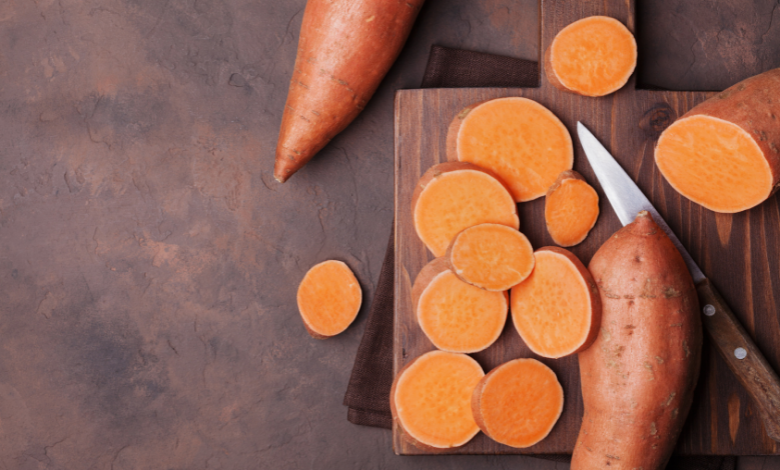Glycemic Index, Calories, and Nutrition Facts of Sweet Potatoes
Memories of a Thanksgiving table come to mind when you think of sweet potatoes. But did you know how good are they for you?

In some cases, these nutritious tuberous vegetables have shifted the conventional white potato out of our kitchen and have found their way onto restaurant menus. Are sweet potatoes a better choice than their white potato counterpart? What makes a sweet potato nutritionally different?
Well, in today’s article, we answer those questions for you and take an in-depth look at some of the sweet potatoes’ impressive nutritional benefits.
Sweet Potato Nutritional Facts
Based on the USDA’s Standard Reference, a medium sweet potato (120 g, 1.9 inches in diameter, and 4.9 inches long) has the following nutritional breakdown:
- Fiber/Sugar: 5/4 g
- Carbs: 25 g
- Fat: 0.05 g
- Protein: 1.9 g
- Calories: 111
Sweet potatoes are also high in antioxidants, potassium, manganese, beta-carotene, and vitamins A plus C.
If you compare that to a traditional white potato, you will see that the values differ significantly:
- Sugar/Fiber: 2.4/6 g
- Carbs: 33.3 g
- Fat: 0.20 g
- Protein: 3.5 g
- Calories: 145
White potatoes are higher overall in total carbs and calories but are also a good source of potassium. It’s also good to note that a sweet potato is not a yam, but a yam is a sweet potato.
Sweet Potato Glycemic Index: Why Potatoes Have a Bad Reputation
Sweet potato that is baked obtains a medium GI score of 64. A recent study found that the GI score of sweet potatoes could be potentially impacted by the preparation and cooking techniques used on them.
It was found that microwaving, baking, and steaming produced average GI scores of 66, 64, and 63.
This drops to low GI scores of 28 and 40, respectively, when raw or dehydrated. The study was even more interesting because a commercial extract from the sweet potato cortex known as Quiapo had a lowering effect on the glycemic index. It was proven that caiapo could bring a white potato to the same glycemic level as a raw sweet potato peel.
Food’s glycemic index is classified on a scale from zero to 100 based on the potential to raise blood glucose levels. Low GI food has more modest changes and a slower climb, while higher GI can trigger a sudden surge and a fast drop in blood glucose.
By creating diets based on lower GI foods, you can help to decrease the risk of heart disease, some cancers, and type 2 diabetes. A high glycemic index is considered 70 or more, medium from 56 – 69, and low being 55 or less.
Preparation Methods
We mentioned previously that preparation methods are a deciding factor in GI levels. First, you need to make sure the potato is prepared correctly by removing the skins and cutting out any bruises with a stainless-steel knife.
It would help decide whether to bake, microwave, steam, boil, sauté, grill, or eat it fresh.
Conclusion
Don’t be tricked into thinking that sweet potato fries are a better alternative to traditional fried even though they taste fantastic.
We hope that this article has been insightful for sweet potato nutritional facts; you can now go forth and cook up a storm.
Keep Reading More About This Topic –





